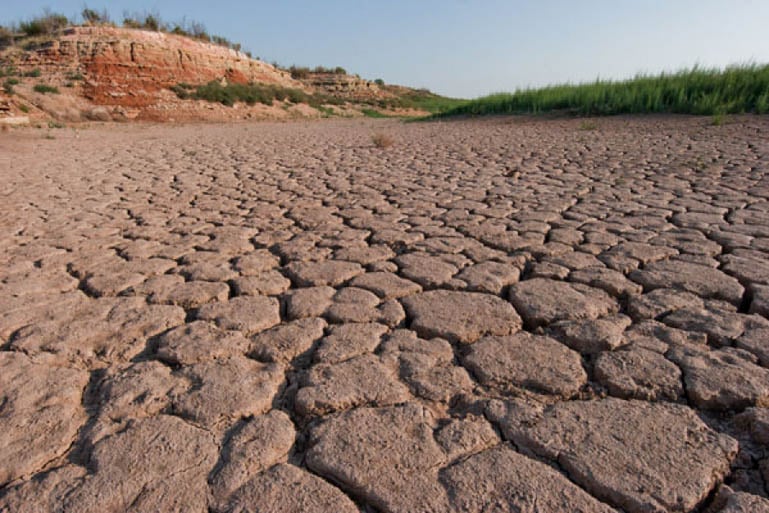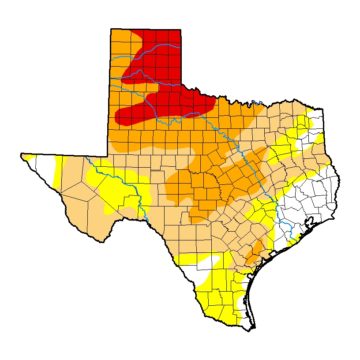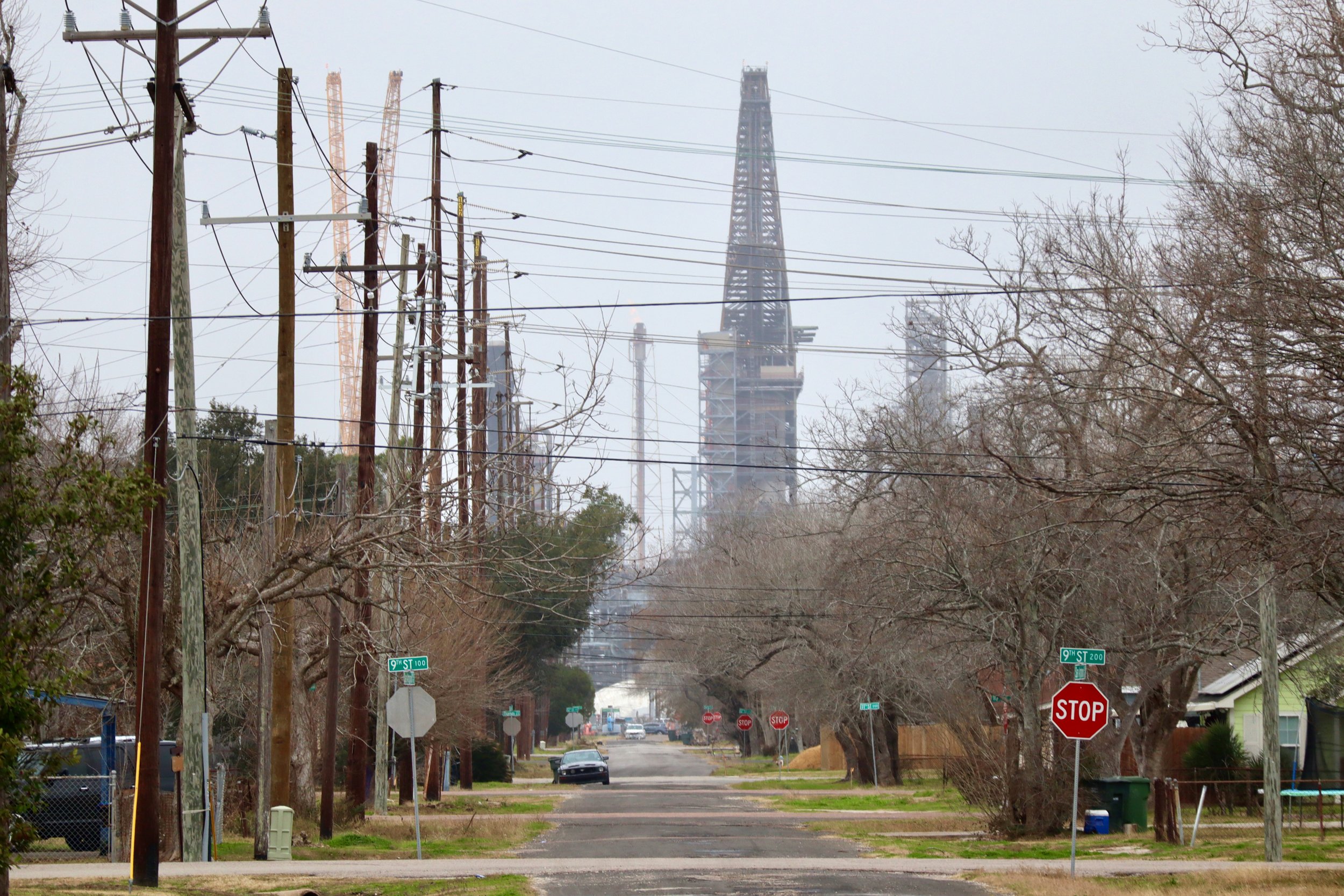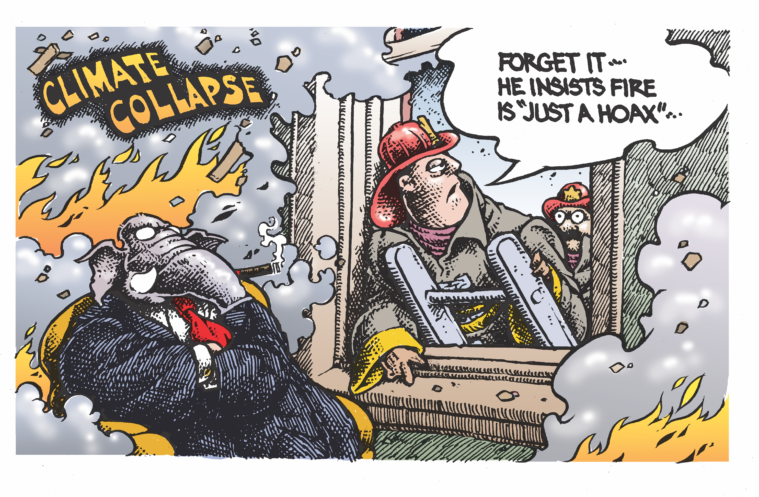
The Panhandle Drought, Fueled Partly by Climate Change, Foretells Other Environmental Risks
As the Panhandle gets drier, more water will be pumped from aquifers and wildfire danger will increase, experts say.

Above: In 2017, temperatures in Texas were “above average” or “much above average” throughout most of the state.
On day No. 126, the streak finally ended. From October 13 to February 16, Amarillo didn’t see a single drop of measurable rainfall — a record rainless streak that has plunged much of the Panhandle into a dangerous drought. The dry spell, which shattered the previous record of 75 consecutive days without precipitation, got the tiniest reprieve last week when one-hundredth of an inch fell. But that will do little to break a drought that’s expected to deepen through the end of winter into spring, straining limited groundwater supplies and laying the framework for wildfires.
“I heard somebody say, ‘The rain was kind of like being broke yesterday and today you have a penny,’” said Melissa Beat, a National Weather Service meteorologist in Amarillo. “The drought definitely still continues.”

The U.S. Drought Monitor shows that most of Texas is stricken by at least moderate drought. But for the majority of the Panhandle, which only gets about 18 inches of rain a year anyway, an “extreme” drought cropped up in Foard County in early January before moving into the eastern Panhandle and overtaking most of the region. That’s not expected to improve any time soon — a three-month outlook predicts higher-than-normal temperatures and lower-than-normal rainfall for most of the area. It’s a remarkable turnaround from just a few months ago, when Hurricane Harvey dumped 60 inches of rain on parts of the state.
The Panhandle is drying out in the face of a warming climate. In 2017, temperatures in Texas were “above average” or “much above average” throughout most of the state, and overall the state saw its second warmest year on record. Record-setting average temperatures were recorded in parts along the Gulf Coast and in Central and West Texas. Texas State Climatologist John Nielsen-Gammon said the Panhandle’s drought shouldn’t be completely pinned on climate change, but he said it’s played a “contributing role” when considered alongside the weather phenomenon known as La Niña and the “variability of the atmosphere.”
According to the Environmental Protection Agency, the number of 100-degree days per year is expected to quadruple in the Southern Plains by 2050, leading to “greater evaporation and surface water losses, more heat stress, and increased energy demand for cooling.” Parts of Texas and Oklahoma are “projected to experience longer periods without rainfall.”
In lieu of rainfall, Panhandle farmers will have to pull more water from the Ogallala and Edwards-Trinity aquifers to keep crops alive, said Kathryn Drury of the High Plains Water District. About 95 percent of that water is drawn from the Ogallala, one of the world’s largest and most depleted aquifers that serves as the main source of water for the cotton and sorghum growers here. February is the off-season for those commodity crops, but some producers in the 16-county water district have already started irrigating winter wheat, a crop sometimes used as feed for cattle. If conditions don’t improve before cotton and sorghum planting season begins in May, producers will lean into the aquifer to get those crops up, too.
“Under the assumption [the drought] will continue, we will experience more pumping until we get some supplemental rainfall,” Drury said. From 2016 to 2017, the aquifer levels within the water district dropped by an average of a half-foot, negating the 0.3-foot net gain from 2015 to 2016. Water levels within the district have dropped precipitously in the preceding decade — from 2006 to 2016, water levels dropped on average by 9.29 feet.
“I heard somebody say, ‘The rain was kind of like being broke yesterday and today you have a penny.’”
The cycle of extreme drought and extreme rainfall is also exacerbating wildfires in the Panhandle. The drought was preceded by an unusually wet spring and fall (some parts of the Panhandle saw flooding in 2017), spurring growth of grasses and woody plants that die or go dormant during winter. Wildfires, a perennial threat in this part of Texas, use the dry, crispy material to grow to monstrous proportions — last year, a massive grass fire ripped through the Panhandle, burning a half-million acres and killing five people. Fuel loads are exacerbated by a USDA conservation program that pays farmers to grow grass but does little to enforce rules requiring management of the resultant brush. Most of the Panhandle’s counties have put burn bans in effect.
Low relative humidity, abundant fuel and high winds have prompted the National Weather Service to issue fire danger warnings for parts of the region already this year, which is before wildfire season typically is in swing. In a news release, Texas A&M University said that drought coupled with heavy fuel loads “could make for a long fire season.” Already this year, a grass fire in Motley County zipped across 3,200 acres in an afternoon. After an explosion in Slaton, volunteer fire crews rushed to put out a grass fire that threatened six homes and three businesses. In Potter County, a grass fire forced the evacuation of six homes.
This week, a cold front scattered freezing rain and snow through the region. But as precipitation amounts are expected to remain under an inch in most areas, the weather event likely won’t be a drought killer.


